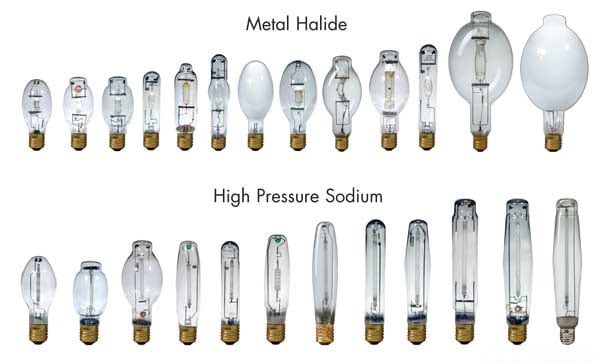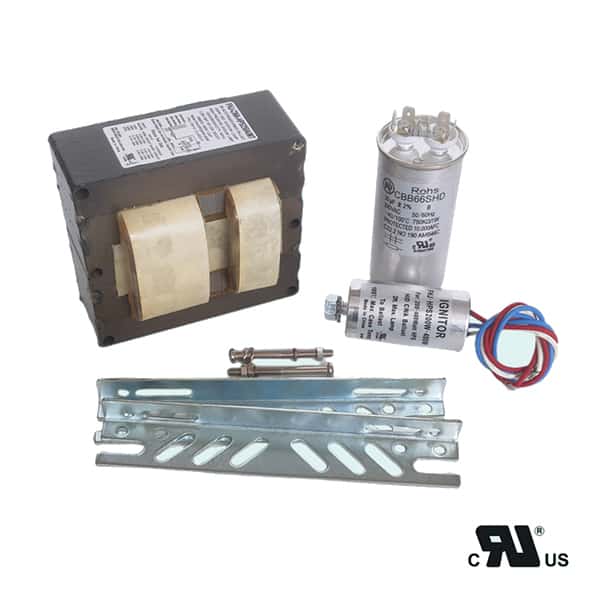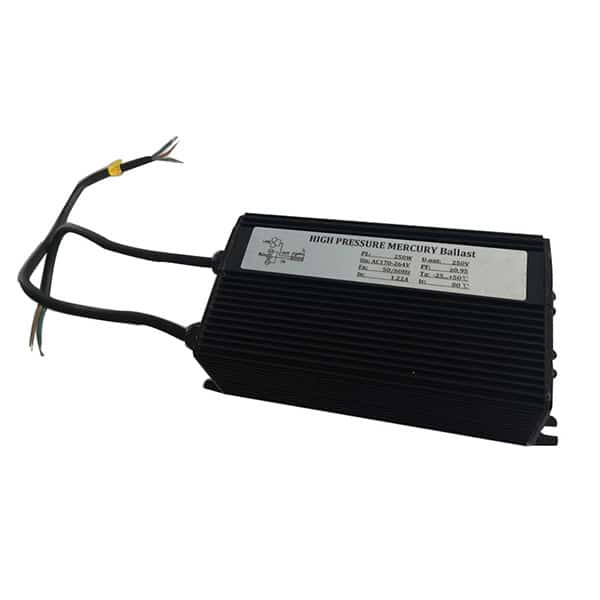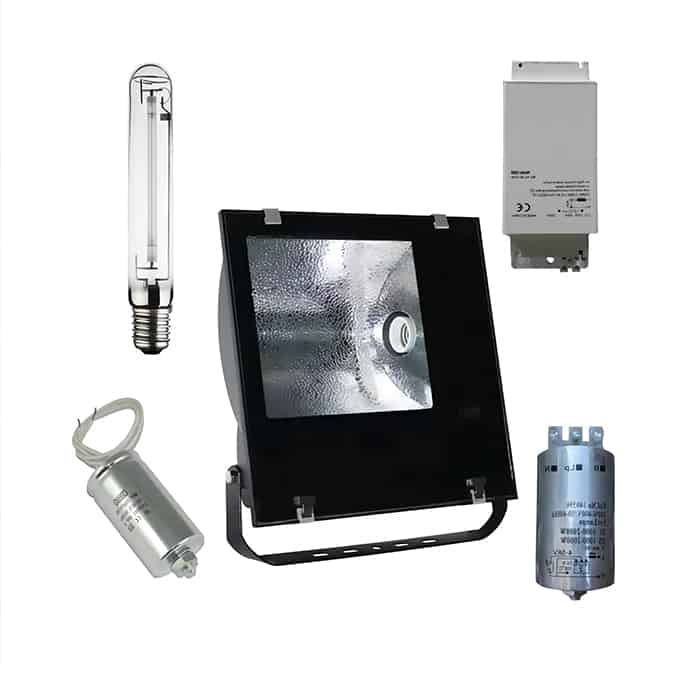Knowing how much electricity a light ballast uses is important to make sure you don’t use more electricity than you need, especially in businesses that use a lot of lights, like growing plants inside, commercial buildings, or factories. Most people think about how many watts a light bulb uses, but the ballast that powers the bulb also uses electricity that you need to think about.
Ballasts use different amounts of power depending on what kind they are and the bulb they work with. On average, a ballast will use 5-20% more electricity than the bulb it works with because it’s not 100% efficient.
Knowing how much electricity your ballast uses is important to make sure you don’t spend too much money on electricity, especially when you have a lot of lights on for a long time. To figure out how much electricity your ballast uses, you need to know how a ballast works, what kind of ballast you have, and how to figure out how much electricity it uses.
How Does a Ballast Work?
A ballast is an essential component for lighting systems, especially for High-Intensity Discharge (HID) lamps like Metal Halide (MH), High-Pressure Sodium (HPS), and Fluorescent lamps. Its primary function is to regulate the electrical current flowing to the lamp. When a light is turned on, the ballast provides the initial high voltage needed to ignite the lamp. Once the lamp is operating, the ballast reduces the voltage to maintain a steady current flow.
This regulation process is critical because, without a ballast, the lamp would draw too much current, which could result in overheating and burnout. However, in the process of controlling the current, ballasts consume extra power beyond the wattage rating of the lamp itself. The amount of power a ballast uses depends on its efficiency and design.
Ballasts also compensate for voltage fluctuations and stabilize the light output. Despite this important function, the process of converting and controlling electrical power isn’t 100% efficient. There is always some energy loss, typically in the form of heat, which adds to the total wattage consumed by the ballast.
Types of Ballasts and Their Power Consumption
There are two primary types of ballasts used in lighting systems: magnetic ballasts and electronic ballasts. Each type has different characteristics that affect their power consumption.
Magnetic Ballasts
Magnetic ballasts, also known as core-and-coil ballasts, are the older, more traditional type. They use a combination of wire coils and metal cores to regulate the current. While these ballasts are reliable and durable, they are not particularly efficient. A significant portion of the energy they consume is lost as heat. Magnetic ballasts typically consume about 10-20% more wattage than the lamp’s rated wattage due to internal losses.
For example, if you have a 400-watt HID lamp powered by a magnetic ballast, the total wattage consumed might be closer to 440-480 watts. This additional consumption is due to the inherent inefficiencies in the magnetic ballast design, which generates heat during operation.
Electronic Ballasts
Electronic ballasts are a more modern and energy-efficient alternative. They use solid-state circuitry to regulate the current flowing to the lamp, which allows for better control and reduced energy losses. Electronic ballasts typically operate at much higher frequencies than magnetic ballasts, which eliminates flickering and improves energy efficiency.
Due to their efficiency, electronic ballasts typically consume only 5-10% more wattage than the lamp’s rating. So, for the same 400-watt lamp, an electronic ballast might consume around 420-440 watts. While the initial cost of an electronic ballast may be higher, its energy-saving benefits make it the better option in the long run, especially in large-scale or long-term lighting applications.
How to Calculate the Total Wattage of a Ballast System
To understand how much total energy a ballast system uses, you need to calculate the combined wattage of the lamp and the ballast. This is done by factoring in the efficiency of the lamp ballast and the rated wattage of the lamp. Here’s a simple formula to estimate total power consumption:
Total wattage = Lamp wattage + (Lamp wattage × Ballast efficiency loss)
For example:
- If you have a 400-watt lamp and a magnetic ballast with an efficiency loss of 10%, the total wattage would be:
- 400 watts + (400 × 0.10) = 440 watts.
- If you use an electronic ballast with a 5% efficiency loss, the calculation would be:
- 400 watts + (400 × 0.05) = 420 watts.
This means that the type of ballast you use can significantly impact your energy consumption. While magnetic ballasts can add a substantial overhead to your electricity usage, electronic ballasts are much more efficient, saving energy and reducing operational costs.
Examples of Ballast Wattage by Lamp Type
The wattage consumed by a ballast also depends on the type of lamp it supports. Different lamps, such as High-Pressure Sodium (HPS), Metal Halide (MH), and Fluorescent lights, have varying efficiency levels and require different ballasts. Here’s a breakdown of how wattage usage can differ depending on the type of lamp:
High-Pressure Sodium (HPS) Lamps
HPS lamps are popular in both indoor gardening and commercial lighting. They generally have a high lumen output but require a ballast to regulate the current.
- Magnetic Ballast: For a 400-watt HPS lamp, a magnetic ballast may consume an additional 40-60 watts, bringing total consumption to around 440-460 watts.
- Electronic Ballast: In contrast, an electronic ballast might add only 20-30 watts, resulting in a total of about 420-430 watts.
Metal Halide (MH) Lamps
MH lamps are widely used in both commercial and indoor growing setups, offering a strong light spectrum that’s ideal for vegetative plant growth.
- Magnetic Ballast: A 400-watt MH lamp with a magnetic ballast might use an additional 40-70 watts due to inefficiencies, leading to a total of 440-470 watts.
- Electronic Ballast: The same lamp paired with an electronic ballast would likely consume around 420-440 watts in total, thanks to reduced energy loss.
Fluorescent Lamps
Fluorescent lamps, including T8 and T5 bulbs, are generally more energy-efficient compared to HID lamps. However, they still require a ballast, especially in commercial settings.
- Magnetic Ballast: For a 40-watt fluorescent tube, a magnetic ballast may add 4-8 watts, making the total consumption around 44-48 watts.
- Electronic Ballast: An electronic ballast for the same tube would consume an additional 2-4 watts, making the total wattage around 42-44 watts.

Impact of Ballast Efficiency on Energy Costs
The efficiency of a ballast directly impacts long-term energy costs. The more efficient the ballast, the lower your overall electricity usage, and the less you’ll spend on power. While magnetic ballasts may be cheaper to purchase initially, their inefficiency can quickly add up in higher energy bills, especially in large-scale operations such as indoor farming or commercial buildings where lighting systems run for long periods.
By switching to electronic ballasts, you can save significant amounts of energy over time. These ballasts not only reduce power consumption but also extend the lifespan of your lamps by delivering a more consistent and stable current. Over time, the energy savings can more than offset the higher initial cost of electronic ballasts.
Factors That Affect a Ballast’s Wattage Consumption
Several factors can influence how much power a ballast consumes:
Ballast Type
As discussed, magnetic ballasts tend to consume more power than electronic ones due to their less efficient design. Choosing the right type for your application is the first step toward managing energy consumption.
Lamp Wattage
Higher-wattage lamps require more power, which in turn increases the energy consumption of the ballast. For example, a 1000-watt HPS lamp will require a ballast capable of handling the higher current, leading to higher total wattage consumption.
Operating Temperature
Ballasts generate heat during operation, and higher temperatures can reduce their efficiency. Proper ventilation and cooling can help minimize energy losses due to overheating.
Voltage Settings
Some ballasts are designed to operate on multiple voltage settings (multi-tap ballasts). The voltage setting used can impact the overall wattage consumption of the system.
How to Choose an Energy-Efficient Ballast
When selecting a ballast, consider the following factors to minimize watt consumption:
- Efficiency Rating: Look for ballasts with high-efficiency ratings, typically 90% or above. This ensures that less energy is lost as heat, and more power is directed to the lamp itself.
- Dimming Capabilities: Some electronic ballasts offer dimming features, which allow you to reduce light intensity when full power is not needed, saving energy.
- Ballast Compatibility: Make sure the ballast you choose is compatible with your specific lamp type, whether it’s HPS, MH, or Fluorescent.
Final Words
The amount of power a ballast uses depends on what kind it is, how well it works, and the lamp it’s used with. On average, ballasts use 5-20% more electricity than the bulb they work with. Magnetic ballasts use more electricity and aren’t as good as electronic ballasts, which are better for most lighting systems today. If you pick the right ballast, you can save a lot of electricity, which will save you money and make your lights last longer.





